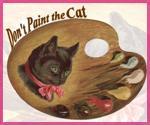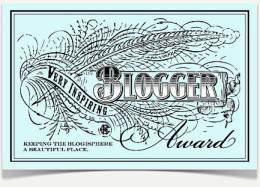I should say quilted hood observations focusing on those which are shaped to resemble bonnets as there are so many kinds of winter hoods from the mid-century. You can find soft hoods which drape the head and shoulders, fluffly soft hoods which wrap around the head, shaped hoods which look similar to bonnets, those which are moderately shaped to cover the head and shoulders, and a multitude of combinations. Right now, I’m just looking at those which are shaped like a bonnet. (Yes, forcing myself to focus.)
Lets start with lining. I assumed incorrectly that I would see the majority of the interiors done in silk. As it turns out the vast majority of the linings are cottons. Some are solids, others are prints. Some are polished cottons, others are un-polished. Here you can see the brown polished cotton on the interior:

Image A - From "The Graceful Lady" site - A black velvet hood trimmed in fur with a polished cotton interior and black silk facing.
Shape
The shape of quilted hoods seems to range from mimicing the shape of bonnets right down to the shape of the cheek tabs to roughly suggesting a bonnet shape, more following the shape of the head in order to hug it with widened or shallowed cheek tabs. This green hood from MFA has rather distinctive cheek tabs. This quilted hood has a roughly follows the lines of a bonnet with a shallower brim, fitting closer to the face and cheektabs which are wider:

Image B - From "The Graceful Lady" site - Silk quilted hood with a bonnet-like shape which fits closer to the shape of the head. The turn back is of an accent fabric, as is the piping and binding.
The tips found in extant bonnets include both circular and those with flat bottoms. Someone also shared with me an ‘ugly’ style hood with a tear-drop shape tip.) Image B, above is an example of a tip with a flat bottom to which the bavolet attaches directly. This black silk bonnet from the MET collection is an example of a circular tip.
The bavolets, or curtains, are most often quilted though at times with a lesser fullness or thickness than the body of the hood. The shapes appear to include both straight pieces gathered to fit the neckline as well as curved pieces shaped to the neckline. The fronts of the bavolets appear in hoods both in attached and not attached states. The bavolet in image B is unattached, while those in image A, the green MFA hood and the black MET hood are all attached to the cheek tabs.
Materials
Exterior materials appearing in extant hoods include a variety of weaves of silks, velvets and light weight wools. I have heard word of cotton hoods as well, but have yet to see them in person. The silks include very fine silks to those that may have been considered inferior at the time with varigation in the dye and fiber/thread thickness. Some are woven stripes using taffeta, twill and satin weaves (Image B is a woven stripe). Some are printed fabrics including stripes and floral-stripes. Plaids are also seen. The exterior material is seen both set on the grain and on the bias. I have yet to determine which is more frequent and whether an angle or direction of the bias stripes or plaids is more common than other placements.
Trims
Extant hoods show a number of trims including fabric trims, fur and feathers. In this hood, the facing and possibly the lining is an accent silk set on the bias and turned out acting as a trim. On the green hood from the MFA collection we see a complimenting, nearly same colored fabric being used as a pleated trim around the brim and bavolet. On the black silk MET hood we see a self fabric trim pleated and placed around the brim, bavolet and tip. This hood also demonstrates the placement of ribbons. On this hood we see where the fur or down trim had encompassed the brim:
Wadding and Structure
Inside the hoods, the wadding has included cotton, wool and down. In the above image C, you can see some of the wadding revealed. Thicknesses seem to range from under a half inch to almost an inch. (The hoods known as ‘uglies’ are much thicker.) Whether this thickness has compacted over time is unknown.
The extant hoods I’ve looked at thus far have included those which are completely soft with no structure and this with structure in the brim or tip. The green hood from the MFA collection is caned through the brim giving the brim support. A hood in the Greene collection at GCVM has a woven straw in the tip for support.
Some of the hoods are assembled with piping, same fabric and contrasting/complimenting, others are seen without piping. The same can be said for binding along the brim and bavolet.
Additional Links
This appears to be a black silk hood with a white or off white cotton interior. (who’s hood this was)









Anna,
This post is great! Thank you for sharing! Your new hood is lovely, by the way!! I thought you would find this post from Carolann on TSA helpful and confirming 🙂
http://thesewingacademy.org/index.php?topic=7667.msg113570#msg113570